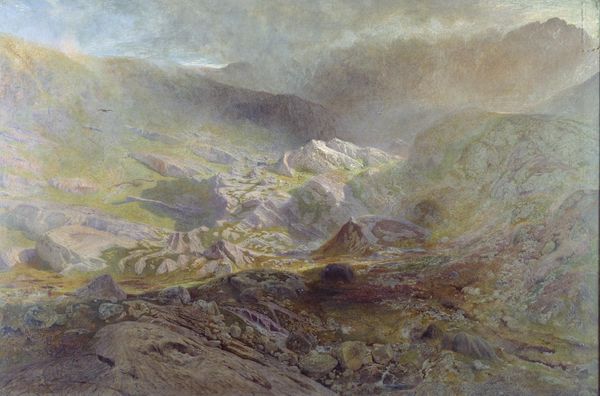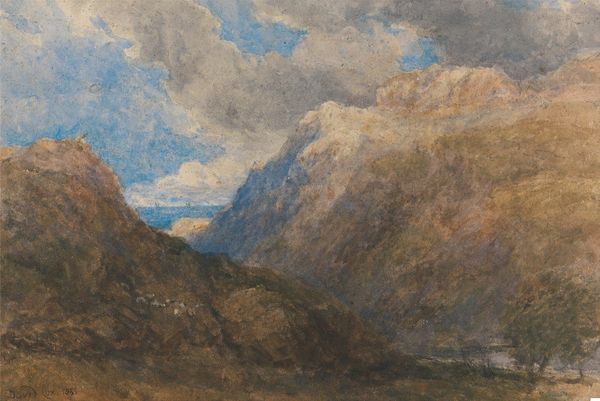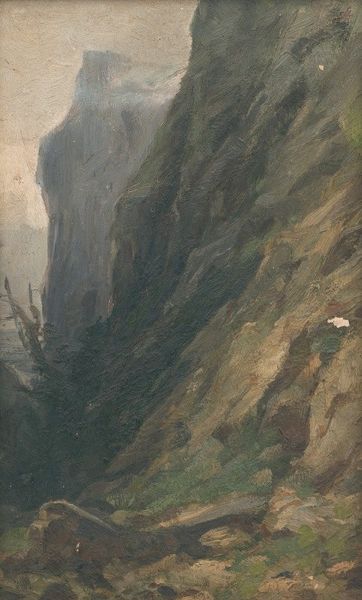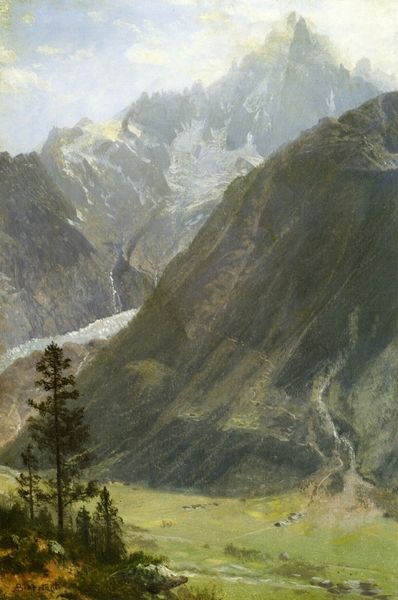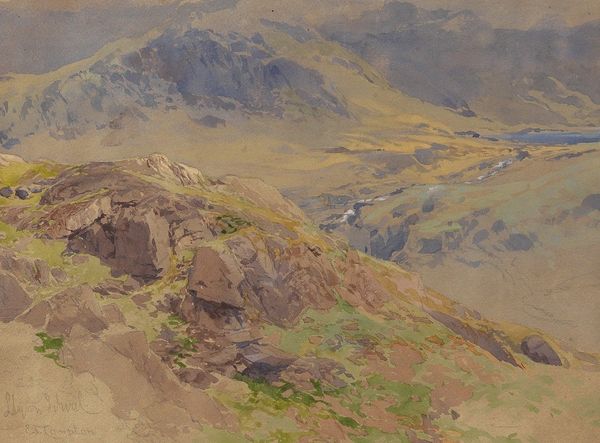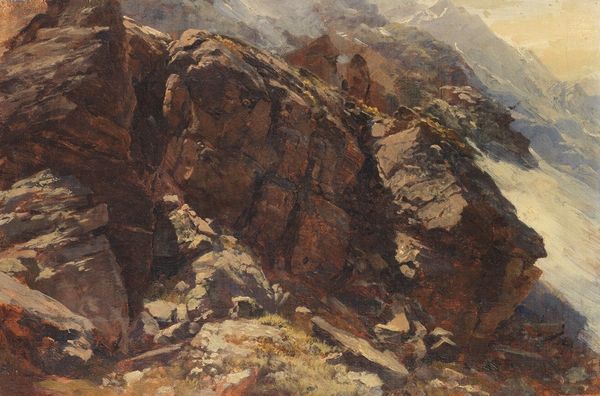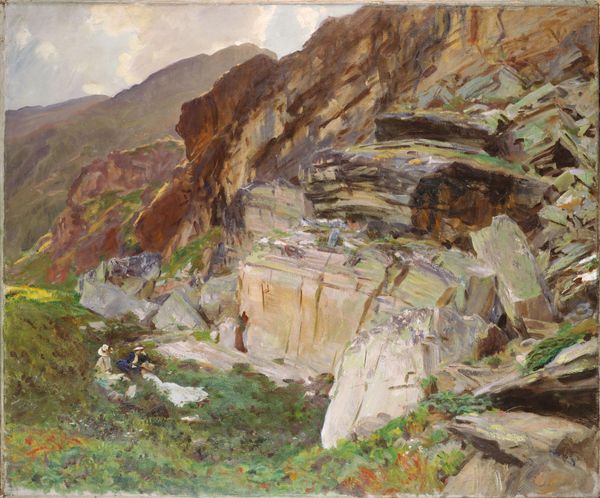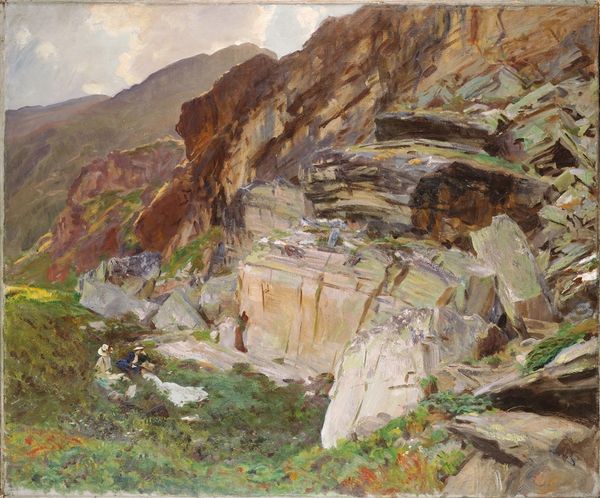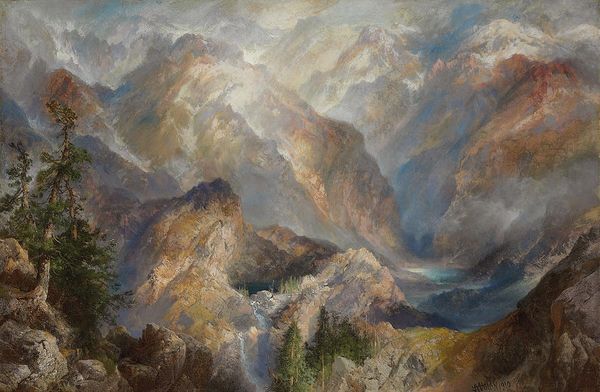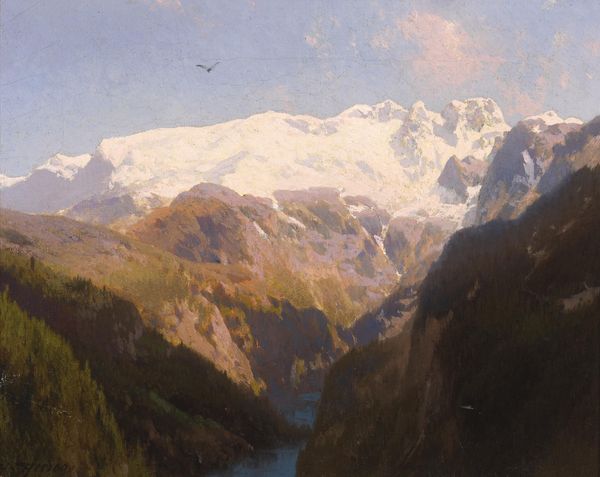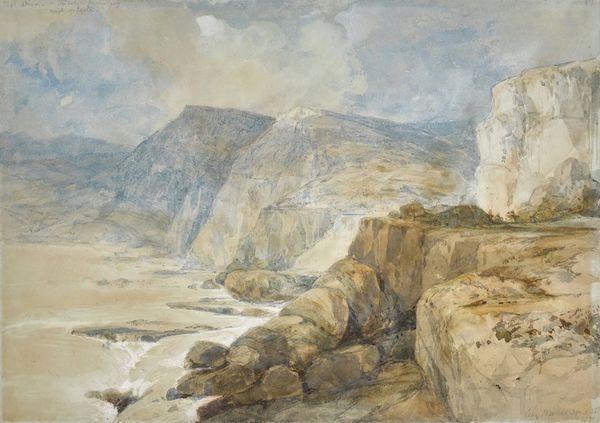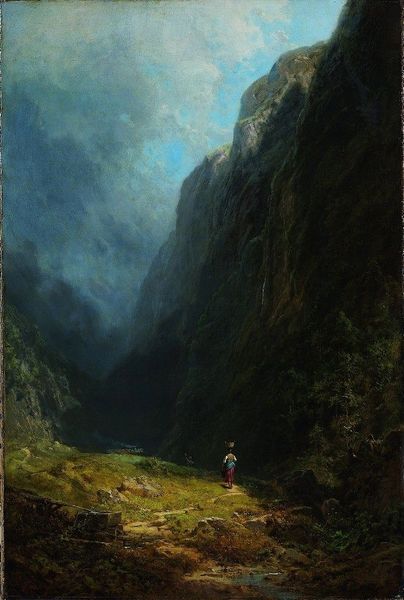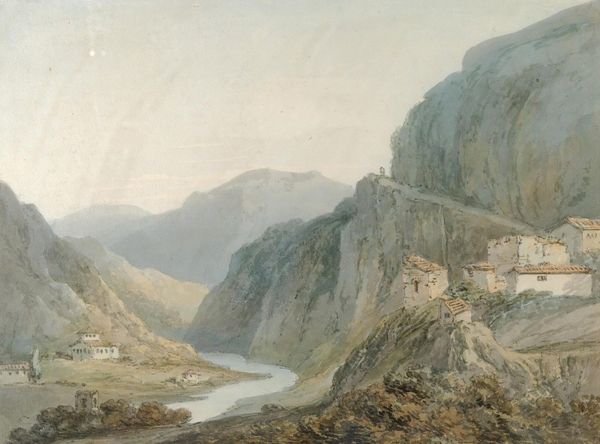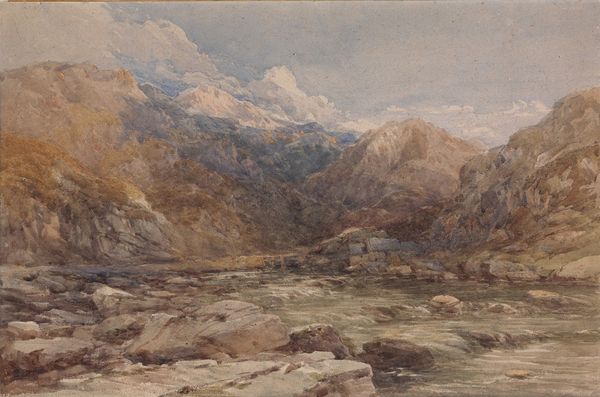
Copyright: Public Domain: Artvee
Edward Theodore Compton made this landscape painting of a mountain gorge and waterfall, though the exact date of its making remains unconfirmed. It reflects the cultural phenomenon of the sublime, a dominant force in 19th-century art. The painting makes meaning through the romantic aesthetics of nature, depicting it as powerful and overwhelming. Compton, who was German-English, likely painted this scene somewhere in the Alps, a popular location in the cultural imagination that was gaining popularity as a tourist destination. The rise of tourism created new markets for landscape painting and the rise of leisure travel was enabled by the industrial revolution, which had an effect on artistic creation. Compton's art does not critique these social structures but rather reflects the conservative aesthetics of his time. As historians, we might consult travel guides, tourist brochures, and other images of the Alps from the period to fully understand the painting’s context. Understanding art involves situating it within its cultural and institutional landscape.
Comments
No comments
Be the first to comment and join the conversation on the ultimate creative platform.
